tags: African Grey Hornbill, Tockus nasutus, birds, mystery bird, bird ID quiz
[Mystery bird] African Grey Hornbill, Tockus nasutus, photographed catching a dragonfly at the Pangani River Camp, Tanzania, Africa. [I will identify this bird for you in 48 hours]
Image: Dan Logen, January 2010 [larger view].
Nikon D300s, 600 mm lens, ISO 640, 1/2500 sec, f/5 0 exposure compensation.
Please name at least one field mark that supports your identification.
The photographer writes:
There seemed to be quite a lot of interest in the African Grey Hornbill's bill. Since it was partially obscured by shadow and wing, l thought I would send another image. You may post if you would like.
The main image shows the bird just after landing, with some dragonfly wing hanging in its bill. The inset shows the bill a little better. All images are of the same individual.
[Mystery bird] African Grey Hornbill, Tockus nasutus, photographed catching a dragonfly at the Pangani River Camp, Tanzania, Africa.
Image: Dan Logen, January 2010 [larger view].
Nikon D300s, 600 mm lens, ISO 640, 1/2500 sec, f/5 0 exposure compensation.











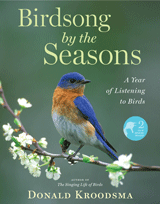

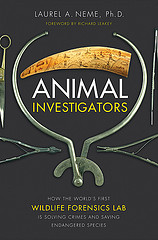



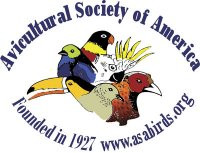

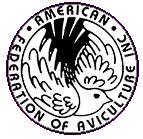



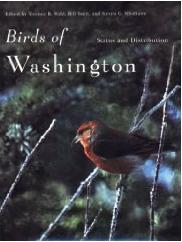











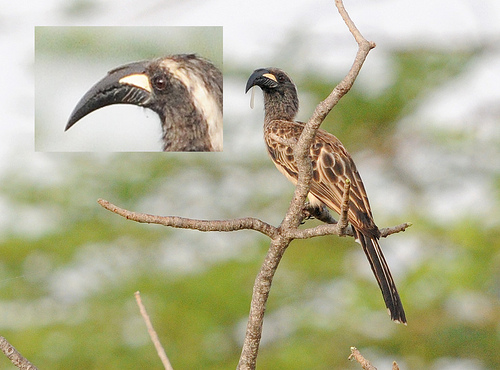



Comments
The large bill without a trace of color: I'd say Grey Hornbill.
But there seems to be too much white in the tail.
Posted by: Jan | March 12, 2010 11:15 AM
Hello Jan, the tail is OK for your ID of African Grey Hornbill. Is this the most widespread Hornbill in Africa?
Posted by: Adrian | March 12, 2010 11:53 AM
I agree with Jan's diagnosis (although the tail doesn't bother me). It looks like you can see a pale base on the lower mandible, suggesting a young bird.
Posted by: carel | March 12, 2010 11:57 AM
Yes, this is the most widespread African hornbill.
Posted by: carel | March 12, 2010 12:02 PM
It's surely an African Grey Hornbill. My clue is the sawtooth like inner edge on the beak.
Posted by: Nish | March 12, 2010 3:35 PM
I wonder what is meant by "widespread", range or how many countries it may be found in?
With regard to total countries, the African Grey is recorded as native to 39 countries, and a vagrant in an additional one...
by comparison, the Red-billed has a range estimate of 10,900,000 km2 (native to 31 countries and vagrant in an additional 2); then the Southern Ground with a range estimate fo 8,670,000 km2 (native to 16 countries); the African Pied with a range estimated at 5,530,000 km2 (native to 21, vagrant in 1); and the Trumpeter rounds out the top five with a range estimated at 4,070,000 km2 (native to 13 countries)
the smallest range is recorded for the Black-and-white Casqued Hornbill at 964,000 km2 but is recorded as native to 21 countries, whereas the Von der Drecken's is only recorded in 4 countries but has a range estimated at 1,150,000 km2
Posted by: David Hilmy | March 12, 2010 3:47 PM
Nish -- is that saw-tooth edge specific to Gray Hornbill, or is it found in other hornbills?
Posted by: psweet | March 12, 2010 6:18 PM
Hey Paul,
I know that several other species of hornbill also have serrated inner surfaces to their bills, an extremely good adaptation for gripping fruit (the serrated edges do not clamp together to form cutting edges)...
Oriental Pied Hornbill (Anthracoceros albirostris)
Great Hornbill (Buceros bicronis) "handling" a fig
Posted by: David Hilmy | March 12, 2010 6:28 PM
Carel,
"It looks like you can see a pale base on the lower mandible, suggesting a young bird"
my Sasol Birds of Southern Africa describes the male of this species as "the only small hornbill with a dark bill, with a creamy stripe at the base" whereas the female has the upper part of the bill pale yellow and the tip maroon"... immature hornbills "resemble the male without a casque but with the same bill color"
Posted by: David Hilmy | March 12, 2010 6:39 PM
Thanks for that David, I meant the largest range ( a more scientific definition). "widespread" comes from reading too many guide books which use this rather loose term.
As an example of convergent evolution don't the Neotropical Toucans have the same serrations for dealing with fruit? I seem to recall the Aracaris have this feature.
Posted by: Adrian | March 12, 2010 6:41 PM
and a couple more hornbill beaks from the same genus as our guest:
Bradfield's Hornbill (Tockus bradfieldii)
Crowned Hornbill (Tockus alboterminatus) feeding insects to its young
Posted by: David Hilmy | March 12, 2010 7:00 PM
absolutely right Adrian- note the huge serrations on the bill of the Collared Aracarai (Pteroglossus torquatus) and the not-so-huge serration on that of the Toco Toucan (Ramphastos toco)...
Posted by: David Hilmy | March 12, 2010 7:16 PM
David, although young hornbills in general resemble adult males rather than females (I believe they are unique among birds in this respect), the juvenile Grays I've seen had bills rather different from either adult parent: without bold color or markings, but with a pale base.
Regarding distribution, variety of habitat could also serve as the metric for deciding "most widespread." Either way, I'd award the prize to T. nausutus. The Yellow-bill ventures but slightly into more arid habitat, where the Gray seems to extend its range into much heavier forests.
Another interesting point of toucan-hornbill convergence: the Malay word for hornbill is "Tucan." I've looked hard for a possible route for introduction of the word from the Tupis to the Malays or vice versa and come up empty-handed.
Posted by: carel | March 12, 2010 8:05 PM
Thanks Carel,
I'm not quite sure what distinction you are making between juveniles and males- the adult male should be showing a light cream stripe towards the base of the bill and along the upper mandible but having super-enlarged this photo, I'm not sure I see the base of the bill anyway- it appears that the "elbow" of the wing covers that precise spot and that the bird's head is not "square" to the camera but slightly inclined away which allows the light to reflect slightly off the upper mandible and masks almost all of the casque- if you follow the top edge of the upper mandible towards the bird's head I think I can just make out the edge of a casque...
by the way, the range estimate for the Eastern Yellow-billed is slightly over 1,000,000 km2 (covering 9 countries) and after the Von der Drecken's, is actually the next smallest range out of the 11 species of hornbill recorded for Tanzania...
the possible linguistic "convergence" is interesting and I'd like to research that a little further, so please drop a comment when/if you find something more- funnily enough, one of the strangest things I experienced when I was in Belize (I did the independence thing in '81 with the British military) was the virtually identical facial structure and physiognomy between the Gurkhas I had attached to my platoon and the local Mayans...
Posted by: David Hilmy | March 12, 2010 8:52 PM
I did come across a fascinating story about how the Helmeted Hornbill, Rhinoplax vigil, came to get it's Malay name of tebang mentua which means "kill your mother-in-law bird"!
from: Cammann, S.V.R. 1950. The story of hornbill ivory. University Museum [University of Pennsylvania] Publication. 15:19-47.
Posted by: David Hilmy | March 12, 2010 9:58 PM
Oops. Meant to say "Red-billed."
I remember reading that colorful story about Rhinoplax.
It's hard to say for sure, but it appears to me that you can see the dark corner of the bird's open gape right below its wrist, with a pale mandible base below that. There's a primary or something hanging down at a funny angle from the forward bend of the wing. I agree that you can see the point of the casque, but it's just a low one like you'd see on a youngster or a hen. I've never seen a young Gray Hornbill that showed the adult male's light stripe on the upper bill or the thin bars on the lower. Their bills are uniform gray with a lighter, buffy base. I've also never seen these birds in the south, only along the Sahel/forest belt transition zone. Perhaps there's a geographic difference.
Posted by: carel | March 13, 2010 12:05 AM
You know, David, looking at that picture again, I think you're right. I think that "mandible base" I was looking at is the bird's wrist with the alula peeking out in front.
I still insist it's a youngster, though. An adult hen would show a rusty tip to the bill and an adult male's casque would be higher.
Posted by: carel | March 13, 2010 12:17 AM
Carel,
Let's not forget that the bill on this bird seems to be slightly tilted away from the camera and not "square" to our view, but more importantly, the casque on this species is variable and very often relatively small with little projection- how much of this is due to geography or subspecies differences is not clear in the literature, however I have found a couple of probable nasutus ssp. and a couple of epirhinus ssp. that all demonstrate a relative smallness with this structure:
African Grey Hornbill (ssp. nasutus), Gambia
African Grey Hornbill (ssp. nasutus), Maritania
African Grey Hornbill (ssp. epirhinus), Tanzania
African Grey Hornbill (ssp. epirhinus), Kenya
Posted by: David Hilmy | March 13, 2010 9:04 AM
It's also quite possible that the "casque" in the photo is actually the alula tip.
Posted by: carel | March 13, 2010 12:14 PM
I beg to differ Carel- if you enlarge this photo you'll see that the top edge of the upper mandible bisects the ridge on top so it therefore must be distal to the bill and therefore a part of the casque- if it was the tip of the alula, we would not see an unbroken top edge to the bill
close-up of male African Grey Hornbill beak
Posted by: David Hilmy | March 13, 2010 2:30 PM
I'll take your word for it, David. Your monitor is probably much better than mine.
Posted by: carel | March 13, 2010 5:41 PM
Ah! Looks like once again, I was completely wrong!
Posted by: carel | March 14, 2010 12:59 PM
wow David, how very astute with regard to the bill! (and your photo references are very useful indeed, thanks!)
Posted by: Kim Birmingham | March 14, 2010 2:59 PM